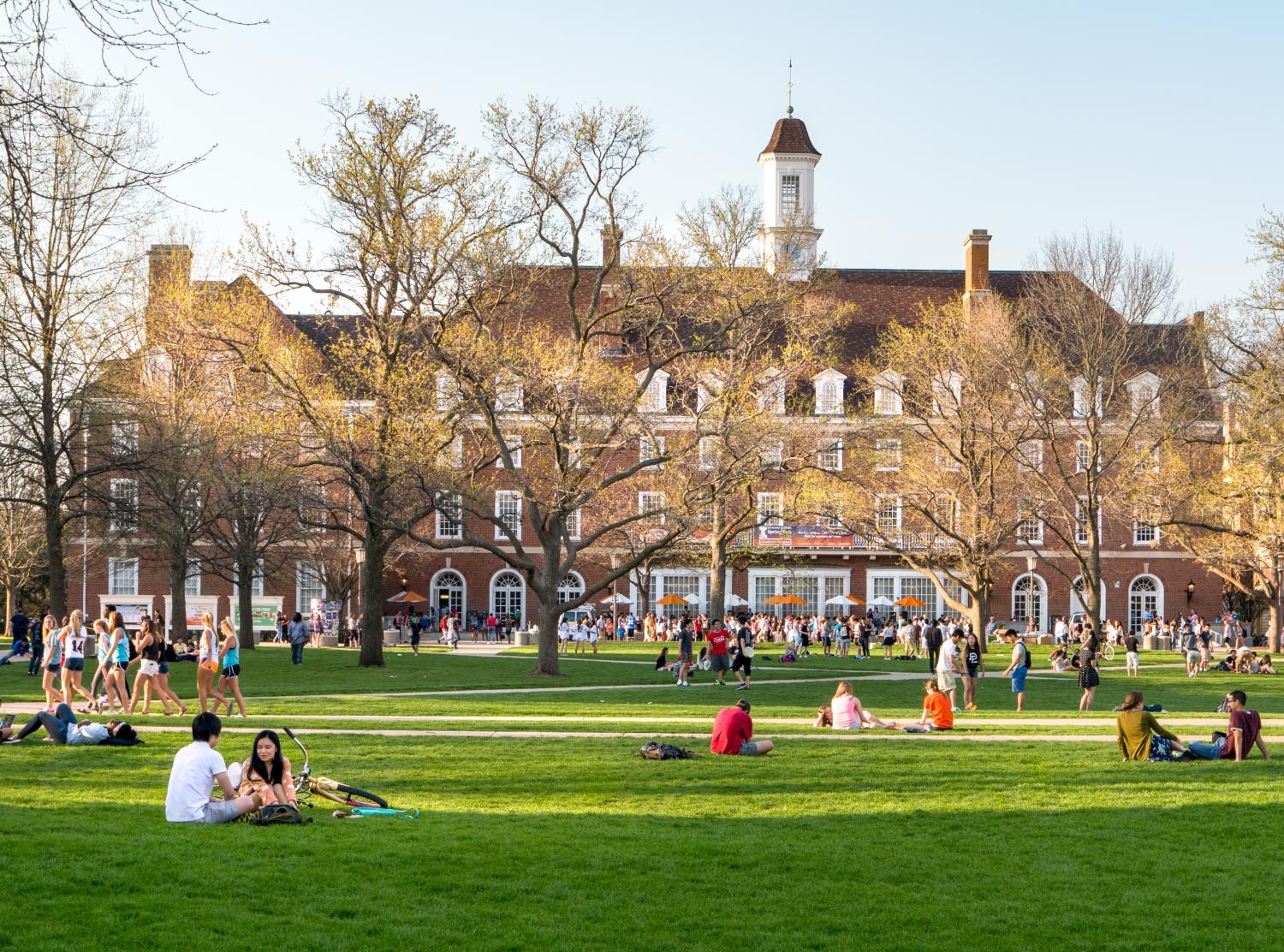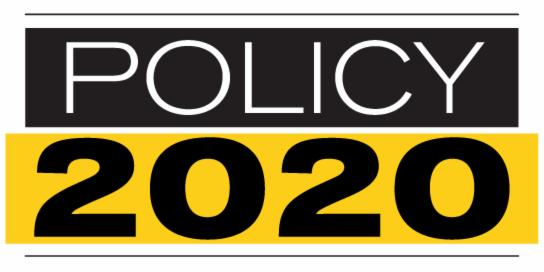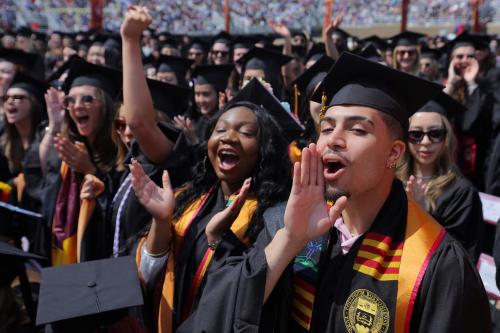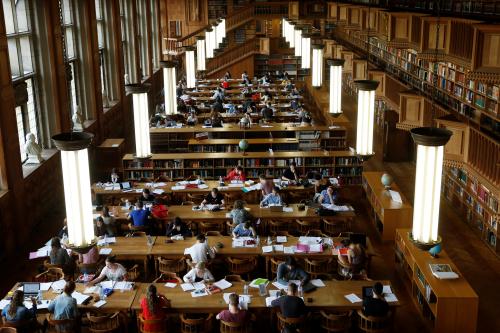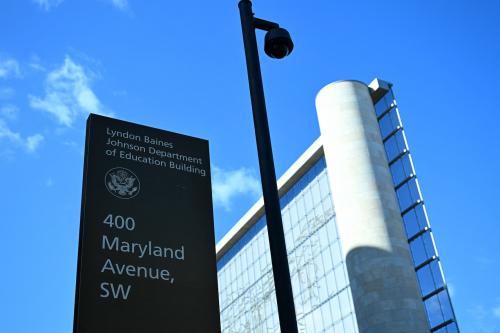There is increasing political and public interest in college subsidy policies that reduce or eliminate the cost of college attendance for students. Because these programs represent large expansions of the role the federal government plays in higher education, it is worth considering their potential benefits and costs. Proponents of college subsidy programs argue that they will increase access to college for individuals who otherwise would not attend college. It is possible to assess the extent to which this is true for proposed college subsidy programs as well as a number of alternatives. I present four recommendations for evaluating and comparing the possible benefits of different college subsidy programs.
- Decisions about design and implementation should be informed by rigorous, high-quality, and meaningful data analyses of how a given program will affect the composition of colleges and universities, and which students will benefit. I present an example of how this can be done with computational simulation modeling.
- Simulation results indicate that many college subsidy programs may have no substantive impact on enrollment in selective colleges, or might even have unintended, negative effects. For example, simulations of programs like the ones proposed by Senators Elizabeth Warren and Bernie Sanders show that they would slightly increase the proportion of students at subsidized, selective public colleges from the highest income quintile and decrease in students from the bottom three quintiles. Therefore, proponents of college subsidy programs should be careful about overestimating their impact on college access.
- It is important to understand how a program’s design details shape its impact on enrollment. The combination of which students are eligible to be subsidy recipients and at which colleges their costs would be subsidized affects how programs influence enrollment patterns.
- It is advisable to consider a wide range of alternative programs and potential outcomes. College subsidy programs act through changes in demand: who considers attending these colleges and where they apply and ultimately enroll. However, they do not explicitly affect supply: the number of spots available in selective institutions and how those institutions make admissions decisions. It is quite likely that policies that are designed to act on supply (either alone or in conjunction with college subsidy programs) might have a much larger impact on whether and where traditionally disadvantaged students attend college. Such policies might involve a substantial investment in expanding high-quality public university system options or incentivizing colleges to alter their admissions policies (e.g., by making eligibility for college subsidy programs contingent on admitting a certain percentage of subsidized students). In addition, policy researchers can find ways to rigorously evaluate the potential impact of programs on colleges that can respond rapidly (e.g., community colleges) and on how program effects may differ across the country.
College Enrollment Problems
A number of Democratic Party leaders have advanced proposals for federal programs that address college affordability. Elizabeth Warren and Bernie Sanders have each proposed plans that would eliminate some or all existing student loan debt and ensure “free” college options by covering all tuition and fees (as well as some additional expenses) at public higher education institutions. Pete Buttigieg has proposed a means-tested approach that would provide fully subsidized tuition at public colleges for families with annual incomes up to $100,000 and partially subsidized tuition for families with incomes up to $150,000. Other plans, such as those supported by Vice President Joe Biden and Senator Amy Klobuchar, would cover tuition and fees only at community colleges. Because these proposals (which I refer to from here collectively as “college subsidy programs”) represent, to varying degrees, large expansions of the role the federal government plays in higher education, it is worth carefully considering their potential costs and benefits.
The direct costs associated with attending college are substantial and have grown rapidly over the past several decades. According to a recent College Board report, the average total tuition and fees charged at private, non-profit colleges for the 2019-20 school year is $36,880 (an increase from $23,890 in the 1999-2000 school year, adjusted for inflation) and $10,440 at in-state four-year public colleges (up from $3,510). These figures do not include supplemental expenses such as room and board, nor do they reflect student aid offered through existing grant programs. Generally speaking, nationwide college subsidy programs can be expected to shift much of the cost of college attendance from individual families to the federal government. Smaller scale (i.e., state and local) programs that subsidize college costs have resulted in ongoing, annual direct costs in the tens and hundreds of millions of dollars. Any similar federal college subsidy program can be expected to represent a substantial yearly expenditure. It is thus advisable to carefully estimate expected costs associated with proposed programs and determine ways that program design can deter sharp increases in tuition and fees charged by colleges.
Just as important, if not more so, is identifying who will benefit from college subsidy programs. There is a large and consistent body of research that demonstrates the positive effects of college attendance (especially through degree completion) for individuals on myriad important outcomes including employment, earnings, health, and family stability. These benefits accrue from a combination of credentials, skills gains, mentoring opportunities, and peer relationships that college attendees experience and receive. Proponents of college subsidy programs argue that they will increase access to college, with individuals who otherwise would not attend college being able to reap the benefits associated with a college education. I believe that it is possible to assess the extent to which this is true for proposed college subsidy programs as well as a number of alternatives. I present four recommendations for evaluating and comparing the possible benefits of different college subsidy programs here.
Recommendation 1: Identify potential effects of college subsidy programs on enrollment ahead of time.
Because these policies represent large governmental expenditures and have the potential to alter how Americans think about higher education, both policymakers and the public should have a sense of how a given program will affect access to higher education in general and across different sectors before it is enacted. Decisions about design and implementation should be informed by rigorous, high-quality, and meaningful analyses of how a given program will affect the composition of colleges and universities, and which students will benefit.
Estimating the potential effect of policies is generally difficult, but it is especially challenging here due to the complex nature of the processes that determine college enrollment. Enrollment is the end product of application, admissions, and enrollment decisions. Students and colleges are not independent: admissions and enrollment decisions are inherently zero-sum (i.e., one student’s admission to a selective college implies another’s rejection, and a student’s decision to attend one college precludes enrollment elsewhere). Students and colleges can affect one another’s outcomes and adapt their behavior over time: selective colleges adjust the number of students they admit based on enrollment in prior years, and students adjust their application behavior based on recent admissions outcomes. And students and colleges are not uniform in their attributes and strategies, with these differences having important implications for how a given policy change might affect different colleges and students.
Analyses that extrapolate from observed effects of existing college subsidy programs without explicitly incorporating the complexity inherent in college enrollment are likely to be misleading in two key respects. They may only capture the immediate impact of potential college subsidy programs; these effects might change substantially over time, however, as colleges and students adjust their behaviors to an altered landscape. Secondly, they may inaccurately predict the effects of programs that target different sets of students and colleges than the programs currently in existence. This may occur due to divergence in how different sets of students and colleges respond to subsidy eligibility and because the outcomes for those directly targeted by programs are influenced by the decisions and outcomes of those who are not.
A viable alternative is to turn to approaches such as “agent-based modeling” (ABM), a computational modeling technique that can explicitly simulate individual college and student behavior over time, thus capturing the complexity of college enrollment dynamics. ABMs represent the characteristics and actions of each simulated “agent” (in this case, college applicants and admissions departments) over time, with system-level patterns emerging from an accumulation of micro-level behaviors. These models are inherently dynamic and heterogeneous, allowing individuals with different attributes and behavioral traits to interact with one another and their environment, and to adapt their decision-making in response to these interactions or changes in environment. This approach is increasingly being used to guide policy and program design in areas such as tobacco retail control, childhood obesity prevention, infectious disease control strategies, school choice, and student assignment.
I have helped develop one such simulation model that is grounded in a strong body of evidence (i.e., rigorous empirical literature and our own analyses of nationally-representative data) about how students and colleges make application, admissions, and enrollment decisions. Previous iterations of this model have been used to explore how family resources affect whether and where their children attend college and to compare race based affirmative action policies with race neutral alternatives. My colleague and I were able to use the model to explore the potential impact of different prospective college subsidy programs on enrollment in selective colleges. We restricted our analyses in this way for two reasons. The first is that research suggests that attendance at these institutions has the strongest effect on later life outcomes (e.g., employment), especially for underrepresented minority and low-income students. And the second is that this set of colleges is unlikely to rapidly expand the numbers of students that they enroll because of their reliance on physical facilities and long-term personnel. Less selective institutions, including community colleges and for-profit institutions, generally face fewer of these constraints and may more rapidly expand their supply of available seats in response changes in demand for college, and do so in ways that we are unable to reliably predict without making a number of assumptions. The model is calibrated such that it represents college subsidy programs that would completely cover tuition and fees for eligible students attending eligible colleges.
I consider this model to be an example of an analytic tool that is rigorous, high-quality, and can meaningfully explore potential college subsidy program effects. The model represents three serial processes that occur in each simulated year: application, admission, and enrollment. Prospective students submit applications to a limited set of colleges, attempting to maximize their expected outcomes (i.e., secure admission at the most desirable colleges possible). Subsidized tuition at a college makes that option more attractive for potential recipients. College admissions departments admit a set of students who they consider to be the best candidates, selecting a sufficient number to fill out their freshman class given recent enrollment yield. Finally, students enroll in the most desirable college to which they have been admitted (with subsidized tuition again making a college more attractive for potential recipients). This model is outlined in more detail in a recent report.
Recommendation 2: Do not overestimate program impact prior to implementation, and be wary of the potential for unintended, negative consequences.
We used our model to conduct a series of “policy experiments.” That is, we compared simulated college enrollment after the implementation of 36 different hypothetical college subsidy programs to the current college enrollment landscape. The enrollment outcomes that we focused on were:
- Whether students enroll in any selective college
- Whether students enroll in a selective college where enrollment would be subsidized
- Whether students enroll in an “elite” college (i.e., the top 20% of selective colleges)
In the dynamic visualization linked here and featured below, we present changes in each of these outcomes for potential subsidy recipients overall as well as disaggregated by resource quintiles.[1]
The program design elements that we varied were:
- Subsidy scale. The proportion of eligible students who are randomly selected to be offered college subsidies. The options are: 10%, 50%, and 100%.
- Student eligibility. What is used to determine whether a student is eligible to be offered college subsidies. College eligibility criteria options are: Achievement, family income, both achievement and family income, and neither.
- College type. Colleges where attendance would be subsidized for participating students. Options include: Least selective colleges, in-state public colleges, and all colleges.
Effects of programs on potential recipients’ enrollment
Our results indicate that a number of large-scale programs (i.e., ones that represent programs enacted at the federal level) would have little effect on who enrolls in selective colleges or even in which colleges students will enroll. In addition, policy specifications may result in unintended and undesirable effects, such as a decrease in recipients’ attendance at selective or elite schools (in turn affecting the composition of student bodies at prestigious institutions) or localization of program benefits among students who are already relatively advantaged. For example, simulations of programs like the ones proposed by Senators Warren and Sanders show that they would slightly increase the proportion of students at subsidized public colleges from the highest income quintile and a slight decrease in students from the bottom three quintiles. Therefore, proponents of college subsidy programs should be careful about overpromising their impact on college access. Doing so is likely to disillusion the public and prompt a backlash that could endanger future policies and programs that might be effective in reducing disparities in college enrollment.
Recommendation 3: Consider the role of program design details in shaping impact on enrollment.
The results displayed above represent a complete exploration of the following combinations of college eligibility, student eligibility, and program scale:
- College eligibility. Three college eligibility scenarios that reflect the colleges at which students would receive subsidized tuition. We simulate programs that represent ones where all colleges are eligible, so students receive subsidies even at the most elite private institutions; programs where subsidies are restricted to less selective public colleges, which may be thought of as public colleges that admit 75% to 90% of applicants (i.e., public colleges excluding most state flagships); and programs in which tuition would be subsidized at public institutions in a student’s state (similar to existing and proposed state-level college subsidy programs).
- Student eligibility. We explore four different eligibility criteria that determine whether students are restricted from receiving subsidies based on achievement (roughly equivalent to ones where the subsidy is available only to students with GPAs of at least 3.0), family resources (where the subsidy is available to low- and middle-income students), both achievement and resources, or neither. These choices are based on common differences in real-world subsidy criteria. For instance, West Virginia PROMISE selects entirely on merit; the federal Pell Grant program selects on need; California’s Cal Grant considers both merit and need; and many local Promise programs have no merit or need requirements.
- We vary the proportion of eligible students who actually receive offers of subsidized tuition. This is intended to represent the difference between programs similar to many of the smaller-scale subsidy programs that have been implemented to date (e.g., at the state level) and the universal elimination of tuition and fees for eligible students through a federal program. I focus the rest of my comments here on the latter case (i.e., one in which 100% of eligible students receive subsidies).
Several patterns emerge from my analysis:
- Effect sizes and directions. When subsidies have observable effects, these are experienced most strongly as increases in enrollment in subsidized colleges, then increases in selective colleges overall, and finally as decreases in enrollment in elite colleges. Subsidized college options attract students to apply and enroll in them, creating observable direct effects for eligible students (i.e., take-up of subsidies through attendance in subsidized schools).
Subsidies can also have indirect effects for these students: they change potential recipients’ application strategies (which colleges they consider and apply to) and enrollment decisions. This can result in increases in attendance in selective colleges overall in some cases (e.g., when enrollment in the least selective colleges of those considered is subsidized and eligibility is based on both resources and achievement) and decreases in others (e.g., when subsidies are offered to high-achieving students to attend any public college). It can also result in slight decreases in eligible students’ attendance at elite schools (e.g., when enrollment at public colleges is subsidized and eligibility is based on both resources and achievement).
Generally, direct subsidy effects are greatest for higher-resourced recipients, while indirect effects tend to be weakest for that same set of students. Students with greater resources are in a better position to take advantage of subsidies by gaining admission to subsidized schools but are also less likely to shift their application and enrollment strategies in ways that affect whether they attend any selective college.
- Student eligibility. Subsidy effects are greatest when restricted by both student achievement and resources. This is because higher achieving students are more likely to be admitted to selective colleges to which they apply and students from families with fewer resources are more responsive to college subsidies, and so the effect of subsidies on their enrollment is more pronounced.
- College eligibility. Subsidy effects are greatest when restricted to public colleges and weakest when all colleges are subsidized. The former condition induces potential recipients to substantially change their application and enrollment behaviors. Conversely, when all colleges are subsidized, students’ application behavior is only marginally affected (i.e., as subsidies only induce students to consider a somewhat wider set of schools) and enrollment not at all.
In addition to these general patterns, policymakers can also make use of simulated effects under specific combinations of program conditions to make decisions about whether and how to engage in program design for desired outcomes. For example, if the primary goal of a large-scale federal program is to maximize access to subsidized tuition at selective colleges for low-income students (i.e., those from families in the lowest income quintile), our simulation results suggest that they may wish to explore a targeted program that provides subsidized tuition at any public college, and restricts eligibility by both family resources and achievement.
Recommendation 4: Explore a wide range of policies, combinations of policies, and policy effects
Although the results above represent a moderately large number of simulated policy experiments, this exploration of policy options was far from exhaustive. The tool discussed here (or something similar) has the potential to provide additional insight into these policies as well as a much broader set of potential policies and combinations of policies. I want to highlight three areas that I believe can be productively explored further when making decisions about programs to propose and implement:
- Explore policies that act directly on colleges. It is perhaps unsurprising that our simulations showed a limited impact of large-scale college subsidy programs on enrollment in selective colleges. These programs exclusively act through changes in demand: who considers attending these colleges and where they apply and ultimately enroll. However, they do not explicitly affect supply: the number of spots available in selective institutions and how those institutions make admissions decisions. It is quite likely that policies that are designed to act on supply (either alone or in conjunction with college subsidy programs) might have a much larger impact on whether and where traditionally disadvantaged students attend college. Such policies might involve a substantial investment in expanding high-quality public university system options or incentivizing colleges to alter their admissions policies (e.g., by making eligibility for college subsidy programs contingent on admitting a certain percentage of subsidized students).
- Estimate potential policy effects on enrollment in less selective institutions (e.g., community colleges). The simulation tool noted here is only designed to reflect enrollment in selective colleges. As discussed above, this is both because of evidence that attending this set of schools has the largest positive impact on student outcomes (e.g., future employment) and because of uncertainty about how less selective institutions might rapidly respond to the introduction of subsidy programs. However, there are proposed policies that are specifically targeted at less selective colleges. In addition, it is likely that other college subsidy programs will substantially affect enrollment in less selective colleges, with important implications for student behavior and program costs. Therefore, policy researchers may want to find ways to expand upon this simulation tool (or one like it) to estimate these effects, even if they must acknowledge greater uncertainty when they do so.
- Understand how effects may vary geographically. There is meaningful variation in how colleges are geographically distributed relative to prospective students. In addition, there a number of existing state and, to a lesser extent, local-level policies in place that affect the college enrollment process. These can both have important implications for the impact of large-scale college subsidy programs. Benefits may be localized or experienced at different levels across different groups of students. Policymakers should consider these possibilities during design and implementation.
Summary
There is increasing political and public interest in college subsidy policies that reduce or eliminate the cost of college attendance experienced by students. Because these programs represent large expansions of the role the federal government plays in higher education, it is worth considering their potential benefits and costs. Proponents of college subsidy programs argue that they will increase access to college for individuals who otherwise would not attend college. It is possible to assess the extent to which this is true for proposed college subsidy programs as well as a number of alternatives.
To do so, I recommend turning to rigorous, computational simulation models that embrace the heterogeneity and interdependence inherent in the college enrollment process. I highlight one such model here. Models like this one can provide important guidance prior to program implementation. They can help policymakers explore a wide array of potential program designs and identify whether programs might result in substantial positive impact, where there is the potential for unintended negative consequences, and how program effects can vary across students and colleges. In addition, these models are highly extensible: they can be productively built upon and used as the basis for additional analyses of program design options and potential outcomes.
The Brookings Institution is committed to quality, independence, and impact.
We are supported by a diverse array of funders. In line with our values and policies, each Brookings publication represents the sole views of its author(s).

